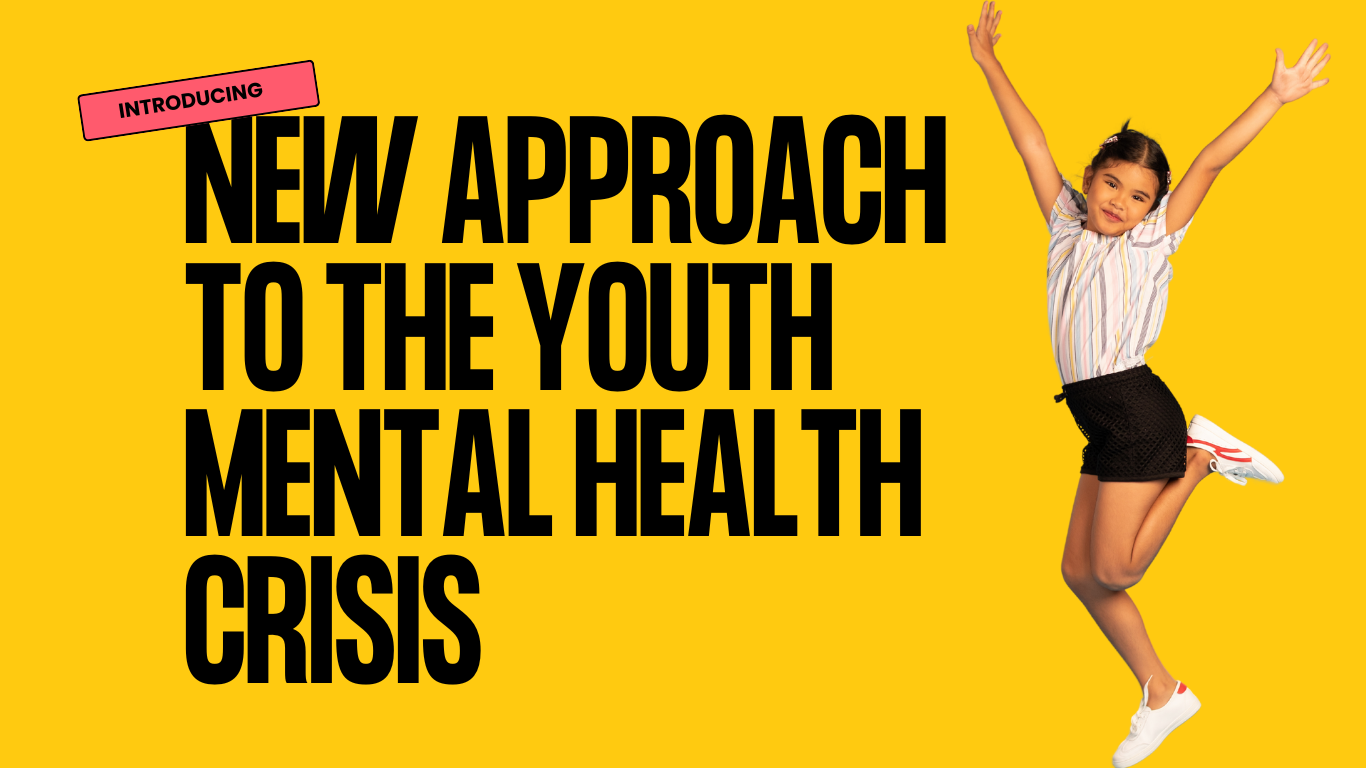
Executive Summary
“The future belongs to the youth of this country. The development of a more sophisticated approach to youth development is a key issue and will always remain so.” Karl-Heinz Rummenigge, ECA Chairman
Mental health is recognized as a major public health crisis in the United States, particularly affecting young individuals. Suicide is now the second leading cause of death for ages 10 to 35. Due to the rise in drug overdoses among adolescents, schools are required to carry Narcan, similar to how they have AEDs for cardiac emergencies.
Most mental health services adopt a reactive approach, but research indicates that young people are less inclined to seek help. This highlights the urgent need for prevention.
With increasing pressure in school and sports, constant social comparison via social media, overly structured schedules, less free time, and more parental supervision, today's kids face challenges unknown to earlier generations.
To effectively address the mental health crisis, we need to invest in the next generation. Just as the fitness industry emerged as a response to the heart disease epidemic, mental health deserves similar innovation, particularly in the way we prepare our youth for the future.
For this reason, Youth To Society Sports introduces a new concept and a proactive approach to the youth mental health crisis. Our program uses a sports-based life skills curriculum to develop youth's emotional intelligence, character, teamwork, leadership, and other essential life skills while providing a fun and pressure-free outlet for kids to be kids.
Team Future: There's one team and every kid makes it
The NFL draft allows teams to select from the top talent to build the best team. Before players step onto the field for the first time, coaches provide them with the necessary skills, strategies, and mindset to win as a team.
There's no draft pick for 'Team Future'. There's one team, and every kid makes it. If we want to raise a generation that's confident, resilient, and ready to win, we have to provide them with the tools and strategies to take on life's challenges.
We Are All Coaches
Just as coaches prepare their teams to win games, today's children deserve the same level of commitment. Every adult—whether you're a parent, teacher, coach, government official, or community leader—is part of the coaching staff, and as "coaches," it's our responsibility to provide players with a playbook so they don't feel defeated before the game of life even begins.

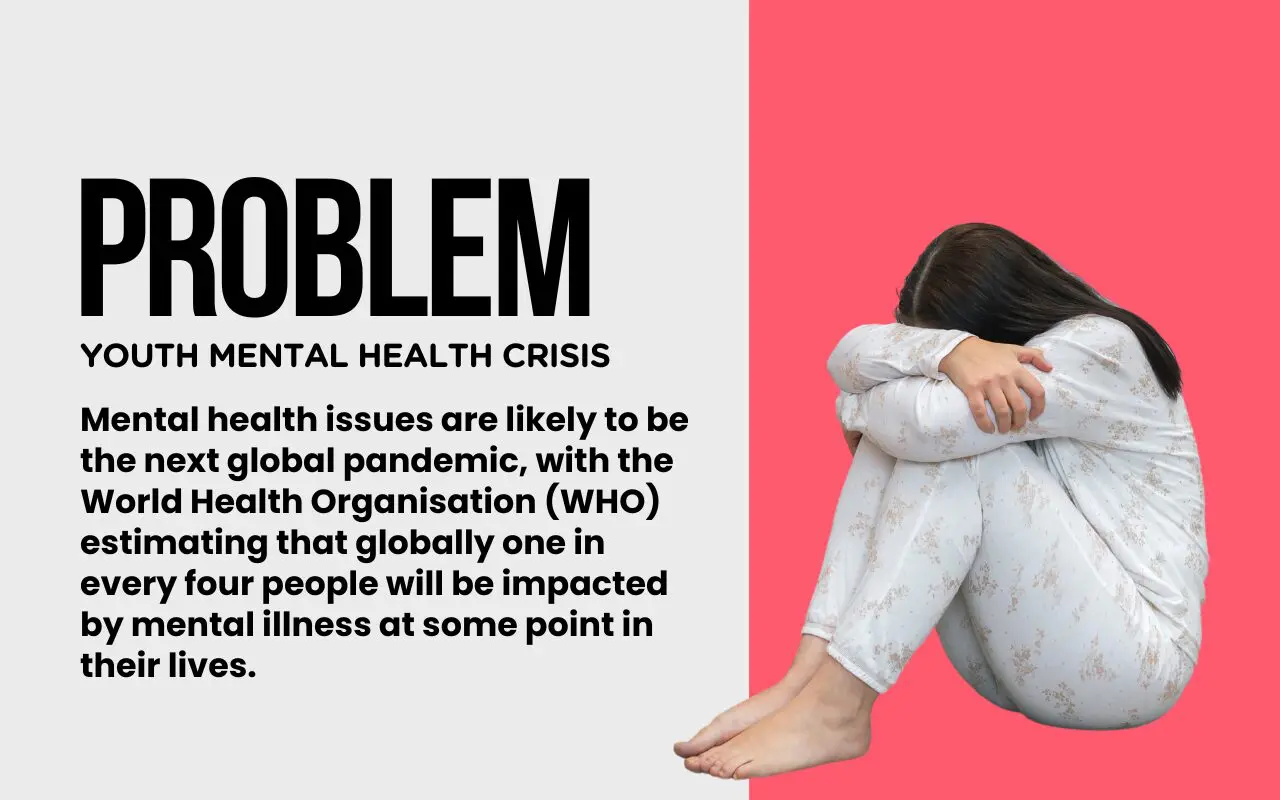
Mental Health Crisis
Mental health is today's epidemic, affecting millions globally, especially youth. Unlike previous public health crises, this one is often invisible, and frequently ignored until it becomes critical.
The U.S. Surgeon General Vivek Murthy has called youth mental health a national emergency and a crisis that requires immediate attention. Recent studies showed 20% of teenagers considered suicide in the last year, persistent depressive feelings in teens rose about 40% from 2009 to 2019, and suicide is now the second leading cause of death in ages 10-24.
Mental health related issues are increasing rapidly, leading to a generational crisis that needs urgent action. Unlike past epidemics with clear causes and solutions, today's mental health crisis is complex and tied to modern culture. Without intervention, these statistics only multiply.
Statistics
Mental Health
Before the pandemic, only 11% of adults reported mental health issues By 2021, that number had soared to 41%, with youth among the hardest hit.
Addiction
Overdose deaths among young people have increased sixfold since 2000, reaching over 106,000 in 2021
Suicide
Suicide is the second leading cause of death among individuals aged 10-35, rising by nearly 40% since 2002
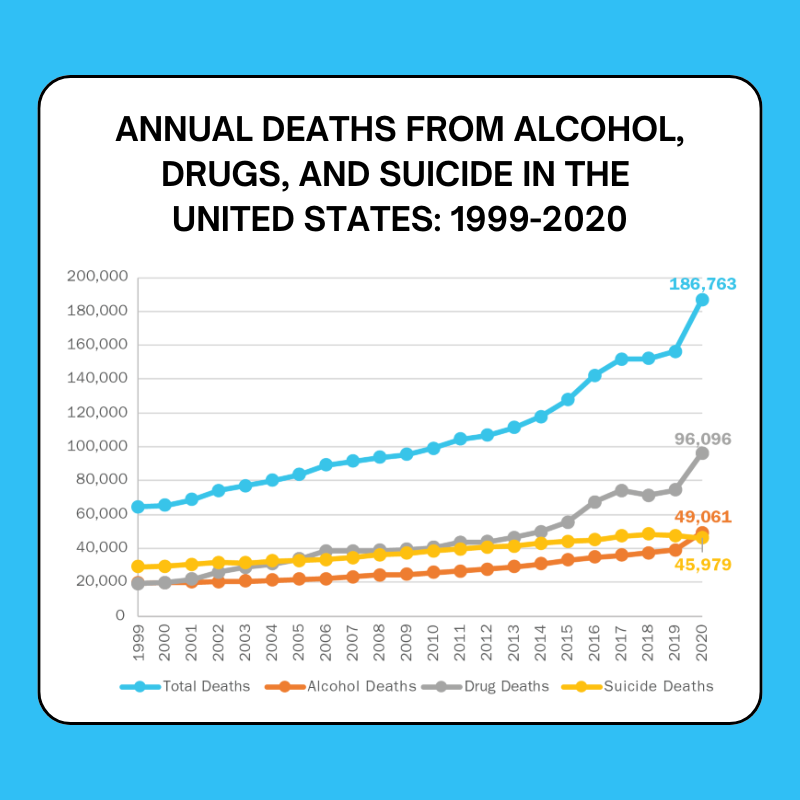
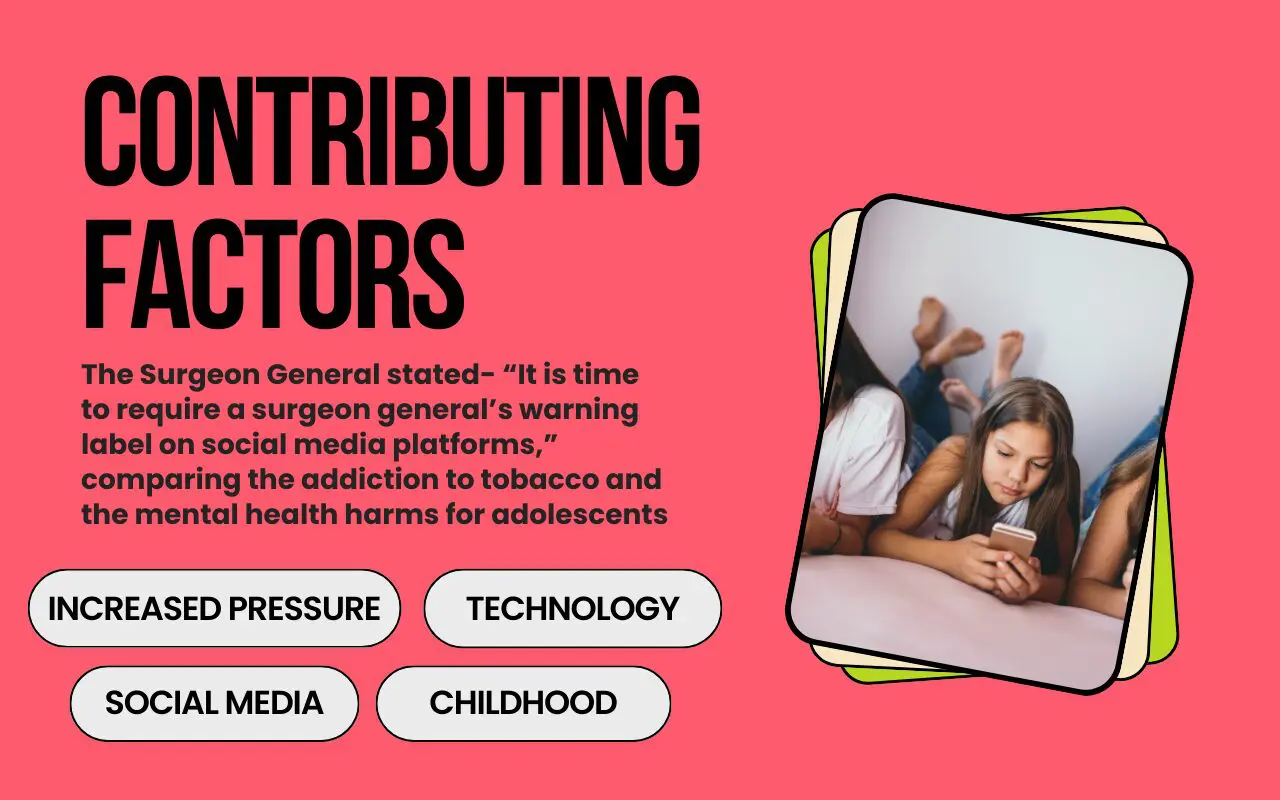
Contributing Factors
Technology and Social Media
The rise of social media has led to an increase in social comparison, anxiety, and self-esteem issues, which research suggests are linked to heightened anxiety, depression, and other mental health challenges. As kids spend more time on screens than engaging in face-to-face social interactions, their social skills have diminished. The Surgeon General issued a health advisory regarding youth social media use, calling it “an urgent public health issue” and comparing it to the addictive nature of tobacco use.
Increased Pressure
School
Increased pressure to excel in school is a huge stressor for many school-aged kids. A study shows that 61% of teens feel pressured to achieve good grades due to competitive college admissions and high expectations from parents and schools. Heavy homework loads and busy schedules leave kids with little downtime. This constant push to succeed and pressure to keep up causes a fear of failure from not being able to meet certain expectations.
Sports
Traditionally, sports provided a fun and stress-free outlet to develop character, teamwork, and social skills. However, with the rise of early specialization and year-round training, studies indicate that sports have become a source of stress rather than a tool for positive mental health. As a result, young athletes are reporting higher levels of anxiety, burnout, and emotional exhaustion.
Less Free Play More Supervision
Thirty years ago, there were no cell phones or tracking devices. Kids learned how to navigate their surroundings, interact socially, solve problems independently, and cope with uncertainty—experiences that helped build essential life skills. In contrast, today’s constant parental oversight and over-scheduled and structured activities have minimized these crucial learning opportunities. A study published in The Journal of Pediatrics links the decline in free play to rising rates of youth anxiety and depression.
Learning to handle conflict and uncertainty is a natural part of growing up and is vital for helping kids learn how to handle challenges on their own. To effectively navigate uncertainty, children must experience it and make decisions independently. However, when parents are always present, they often intervene, preventing kids from handling these experiences independently.
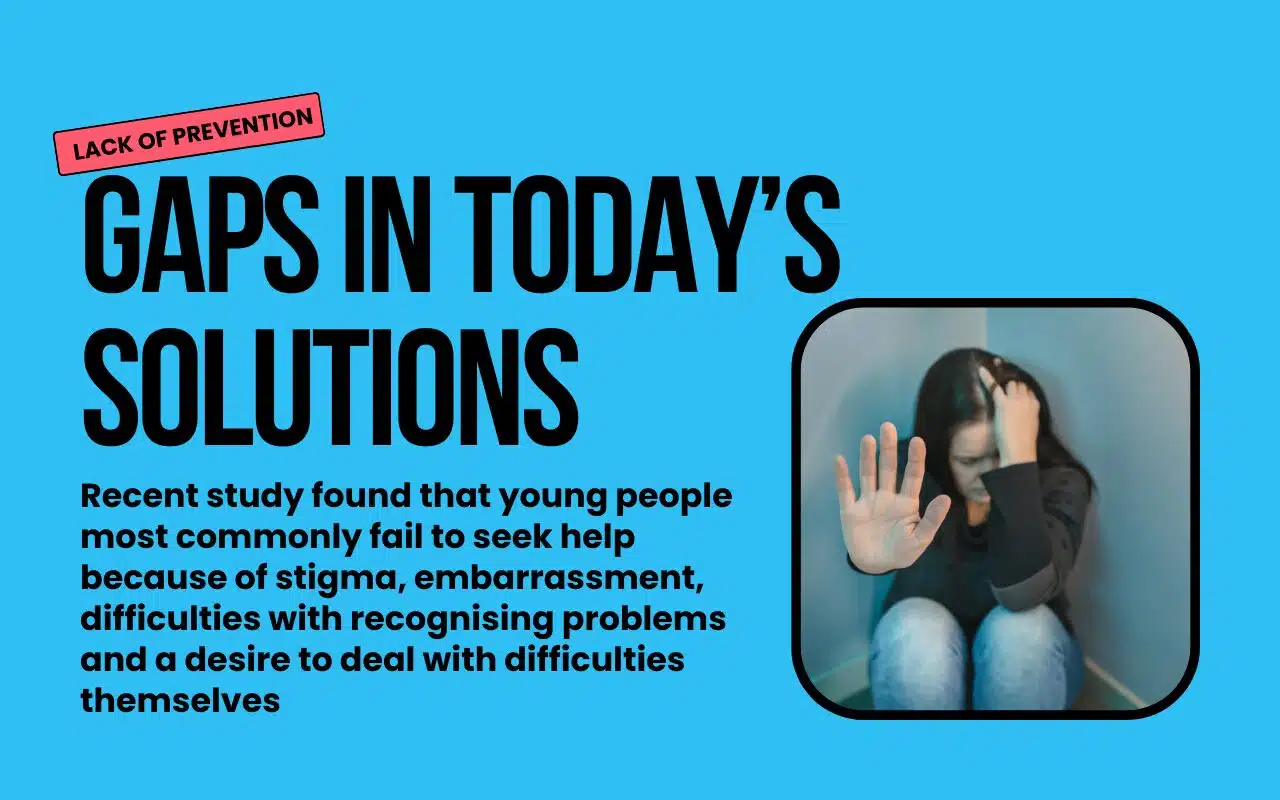
Gaps in Existing Solutions
Lack of prevention
The biggest issue with today's approach to the mental health crisis is that it is mainly reactive, indicating that a problem already exists. The only way to address this epidemic before it escalates further is to adopt a proactive approach that prioritizes mental wellness, emotional resilience, and life skills development from an early age.
Reactive
Many mental health services adopt a reactive approach; the problem is youth are less likely to reach out for support due to:
Stigma-Internalized negative beliefs about mental illness create a fear of judgment or adverse reactions from peers, family, or others.
Lack Of Knowledge- They struggle to identify and communicate emotions or understand that they need professional help.
Self-Reliance-Adolescence is a period of strong independence, and youth may feel that they should be able to handle their problems on their own
Technology
The pandemic accelerated digital transformation across the globe, leading to a more technology-driven world. This surge in opportunities within advancing technology has caused many startups to concentrate on achieving the next technological breakthrough. However, technology will continue to create social isolation and doesn't create the face-to-face interactions that kids need the most.
Income Restricted
Programs focusing on character and life skills development often serve lower-income youth or specific socioeconomic groups. However, every child today needs these skills, regardless of their economic background.
Integrated models
Integrated models combine various objectives into a single program. However, many of these programs place greater emphasis on academic achievements or performance-related goals, which dilutes the character development and social-emotional life skills component.
Schools
Schools must prioritize academic learning and often lack the time or resources to integrate social-emotional learning.
STEM Programs
STEM has gained significant attention recently. While it helps with critical thinking and problem-solving in different contexts, it adds another performance-based objective. Kids need to learn skills for themselves, their future, and their happiness.
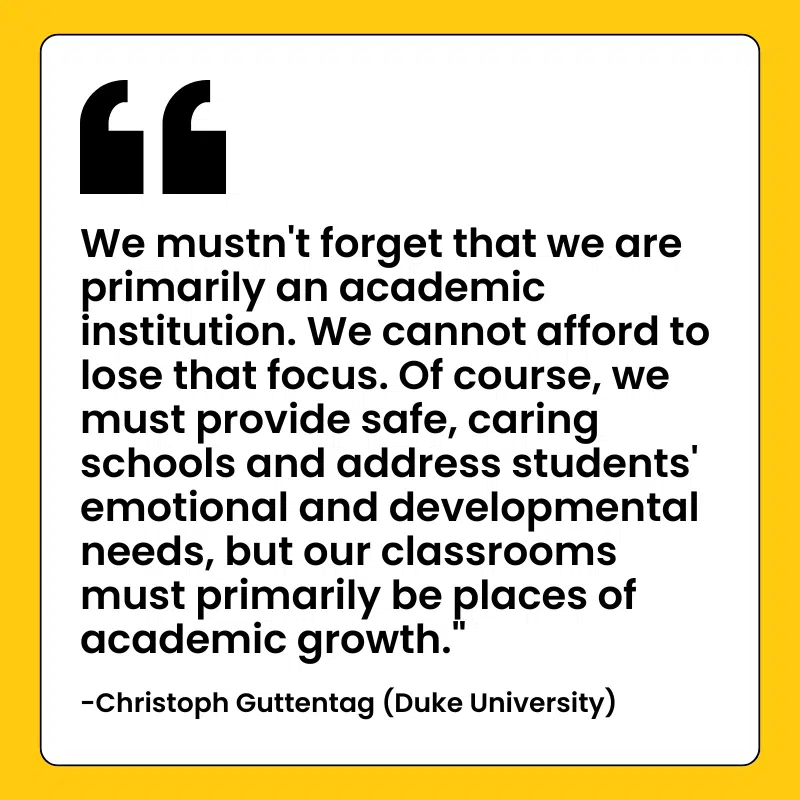
Youth Sports
Many believe that sports build character and teach valuable life lessons. However, research indicates that for skills to transfer to non-sport settings, coaches must deliberately integrate life lessons into the sports experience through discussions, drawing connections, and helping players understand how to apply the lessons learned to their everyday lives. However, the culture of youth sports has changed significantly, making it unrealistic for several reasons:
Coaches
Most youth sports coaches are parent volunteers, and often, they step into the role at the last minute due to a shortage of volunteers. Their primary role is to teach the fundamentals of the sport. Expecting parents to treat this responsibility as critically as it deserves isn't realistic. Competitive leagues may have trained and full-time coaches, but the focus will naturally be elite performance and training to win.
Hyper competitive
Traditionally, sports provided an outlet for kids to have fun. However, as competitive pressure has intensified, sports are now contributing to higher levels of anxiety, burnout, and emotional exhaustion. Studies show that young athletes are reporting increased symptoms of performance anxiety and depression, particularly for kids who play at an elite level or begin to specialize at an early age.
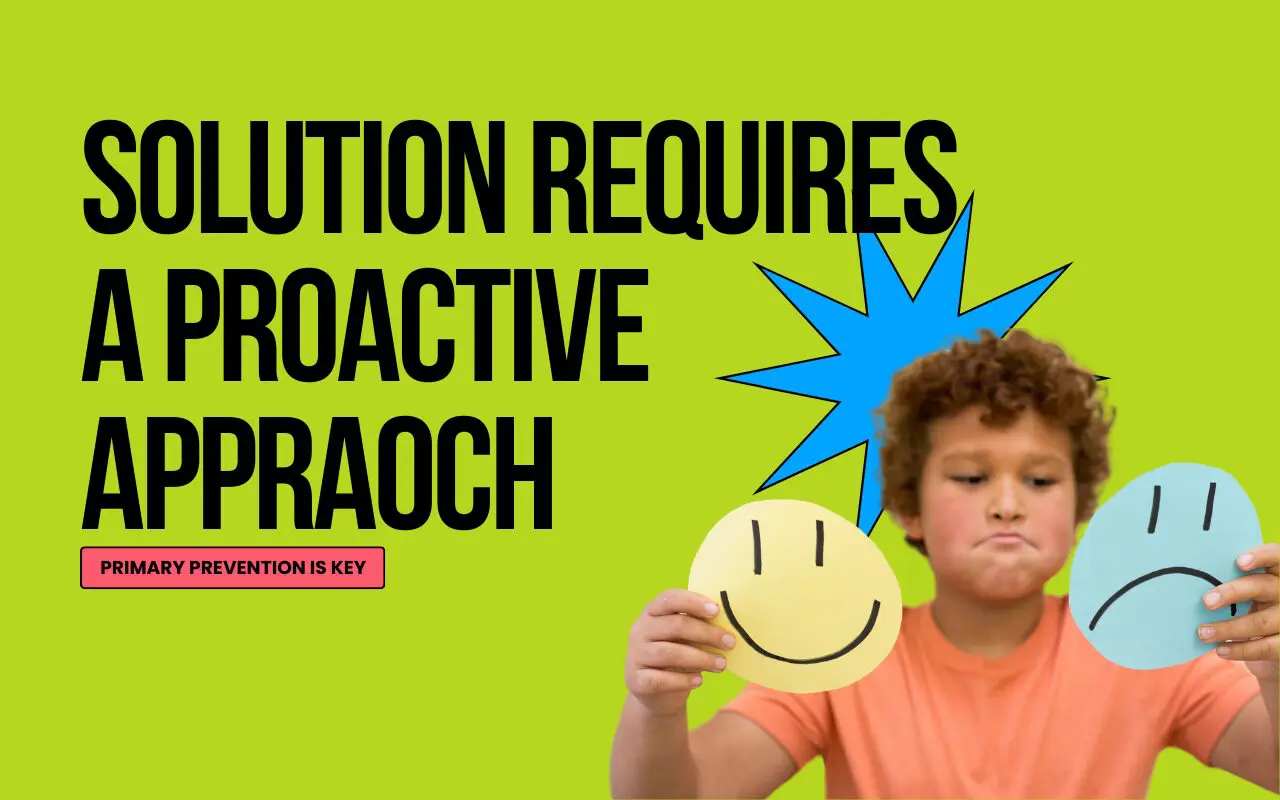
Solution
"We cannot always build a future for our youth, but we can always build our youth for the future." Franklin D. Roosevelt
Prevention is Key
For decades, society has focused on reactive approaches to mental health—intervening after problems arise rather than preventing them in the first place. While therapy, crisis intervention, and medication are essential for those already struggling, they do little to address the root causes that are fueling the youth mental health epidemic. To reverse the crisis, we must shift our focus to primary prevention—building emotional resilience, equipping kids with the skills to navigate challenges before they happen.
A powerful example of the impact of primary prevention is the fitness industry, which was established in response to the heart disease epidemic. As rates of cardiovascular disease skyrocketed, experts realized that hospitals and medication alone could not solve the problem. This led to the widespread promotion of exercise, nutrition, and lifestyle changes, birthing an industry that emphasized preventative health rather than reactive care. Today, we recognize fitness as a pillar of physical health. Mental health deserves the same innovation.
Adopting a Proactive Approach
The next generation is our future. If the world continues to evolve, especially in the digital realm, but we, as a society, do not advance how we educate our youth, we risk setting them up for failure.
Dedicated Program
A proactive approach to mental health requires a program dedicated to developing positive mental health skills. Just as football teaches kids how to play football, schools teach kids how to read and write, focusing on youth's 'inner' skills, character, emotional intelligence, resilience, and empathy would build a solid foundation for mental wellness and create change within one generation.
Fun and Interactive
Sports have historically played a crucial role in youth development, character, resilience, teamwork, and leadership. However, as the youth sports industry becomes more competitive, the long-term consequences are becoming evident as sports contribute to stress rather than as a protective factor.
Despite these challenges, sports offer a fun and interactive environment, and unlike traditional classroom-based mental health education, sports integrate these skills into real-life experiences. However, to reclaim their original purpose, we must introduce a new program alongside traditional youth sports, focusing entirely on character development, emotional intelligence, and resilience. Taking competitive games out of the program allows coaches to use an explicit approach so that kids can practice these skills in a real-world setting.
Leveraging Sports for Impact
The youth sports industry currently serves over 70% of the youth population. However, 70% of kids quit playing sports altogether due to increased competition. The following numbers highlight the opportunity to create large-scale change through a fun, pressure-free sports environment.
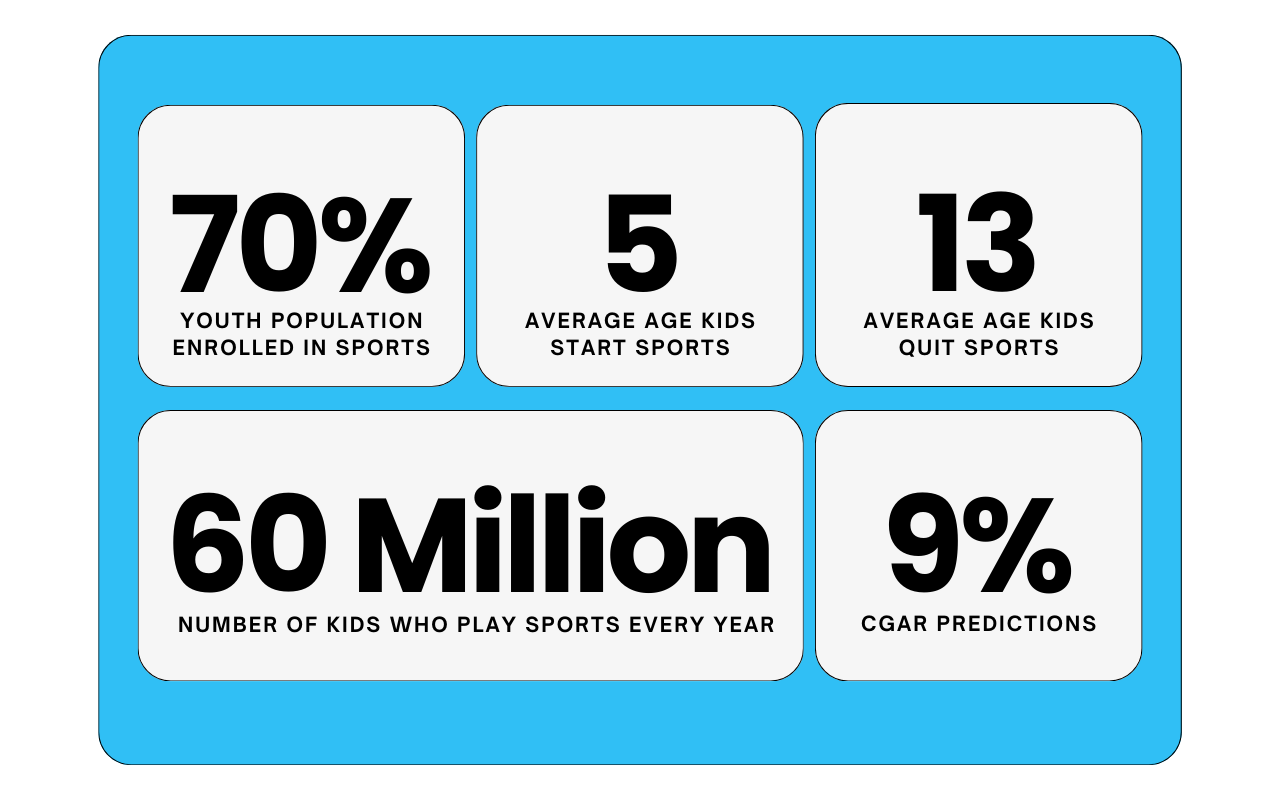
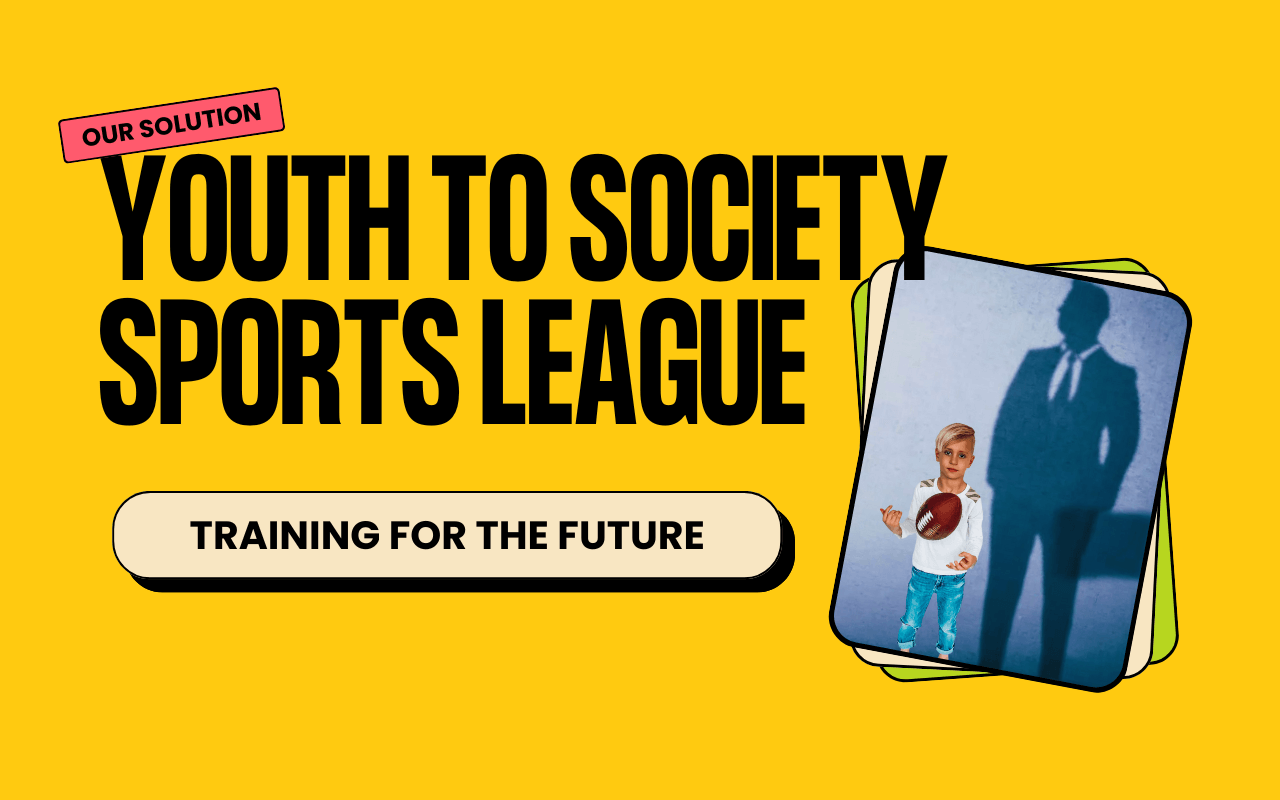
OUR Solution: YOUTH TO SOCIETY SPORTS
Youth To Society Sports aims to create a better society through sports and community service, focusing on proactively addressing mental health issues among youth. Our mission is to tackle the decline in youth mental health by empowering the next generation and introducing a fresh perspective to the youth industry. By combining sports and community service, we help young people develop essential life skills to navigate today’s challenges and build a foundation of mental wellness for generations to come.
Our emphasis is not on teaching the fundamentals of a specific sport but on creating a fun and pressure-free environment to build confidence, resilience, and emotional intelligence. Whether it's a competitive athlete, recreational player, or non-athlete, our program improves players beyond the field. How we go beyond the traditional competition-based model:
How Our Program Operates
We introduce a new concept that teaches essential life skills through sports and community service, focusing on mental growth instead of physical competition. Our approach encourages kids to compete with themselves and strive to be better than they were yesterday. We operate in twelve-week seasons during the fall, winter, and spring, similar to traditional sports leagues.
Sports For Fun
Rather than focusing on the fundamentals of the sport, weekly practices use a sandlot-style pick-up approach to provide a fun and pressure-free environment.
Integrating Life Skills
We use a developed sports-based curriculum to build positive mental health life skills using an explicit approach to help players develop character, confidence, emotional intelligence, resilience, and empathy.
Service Over Competition
We replace weekend games with a team-based community service project.This approach encourages teamwork, fosters empathy, and provides kids with a sense of purpose and responsibility beyond themselves.
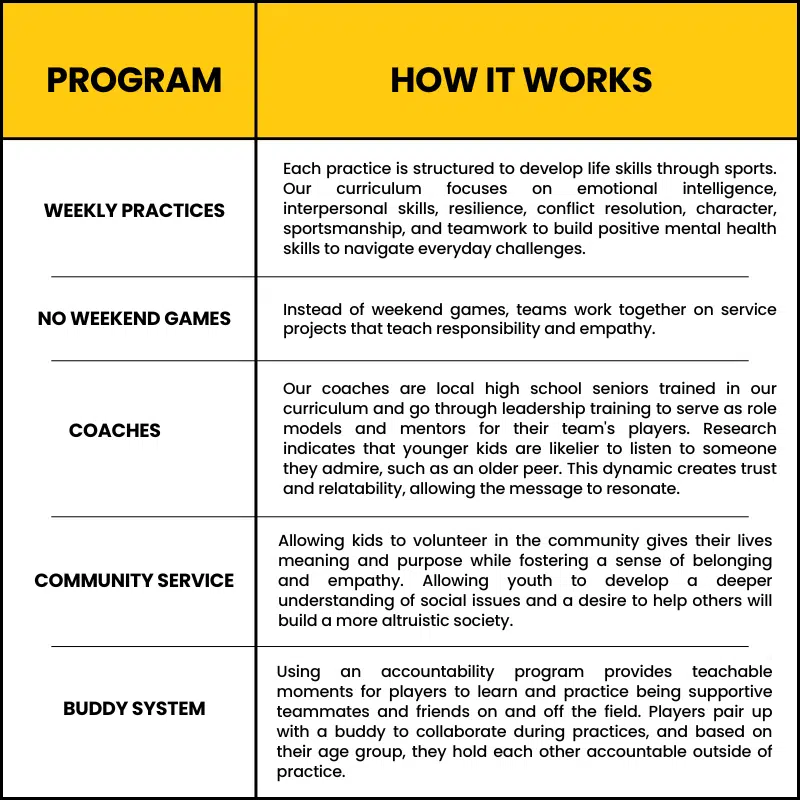
Mentorship Based Coaching
Our coaches are senior athletes from local high schools who act as mentors and role models. Research shows that younger kids are more likely to accept advice from someone closer to their age, as it helps them feel more understood and relatable.
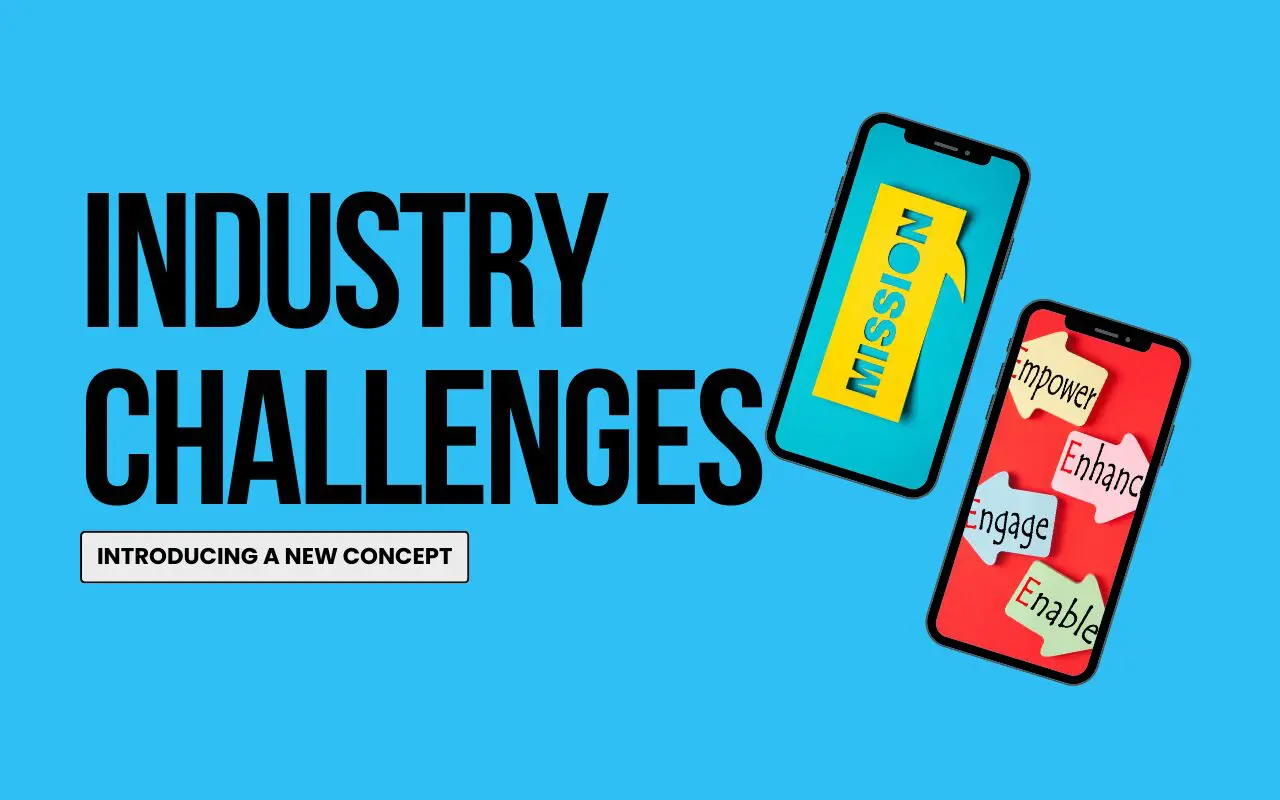
Current Challenges
Securing Partnerships
When trying to connect with organizations with similar values and goals, outreach efforts often yield little to no response, making our outreach efforts difficult. Whether this is due to our message not resonating or an overwhelmed industry, collaboration is key.
Securing Funding
Securing funding has presented significant challenges for several reasons. Many funding sources prioritize established organizations with proven track records and histories of financial success or require the program to target a specific demographic or help an existing problem. The limited research on prevention within mental health is also a barrier to funding.
While this leaves us with few funding opportunities, we remain committed to our mission: equipping every child with essential life skills, regardless of background, race, or socioeconomic status.
Communicating Our 'Why'
The stigma surrounding mental health extends beyond being a barrier to support. Many find it a complex topic difficult to discuss, causing one of our most significant challenges. Communicating our why in everyday interactions, we realize many are unaware of the current health crisis or don't give it the attention it deserves.
Parents who have experienced the loss of a child to suicide often report that they did not recognize or see any warning signs, which highlights the urgent need for prevention.
Encouraging Registration
Since youth sports have been a familiar industry for centuries, introducing a new program into already established sports can be challenging for families to fit into their busy schedules, especially without tangible outcomes.
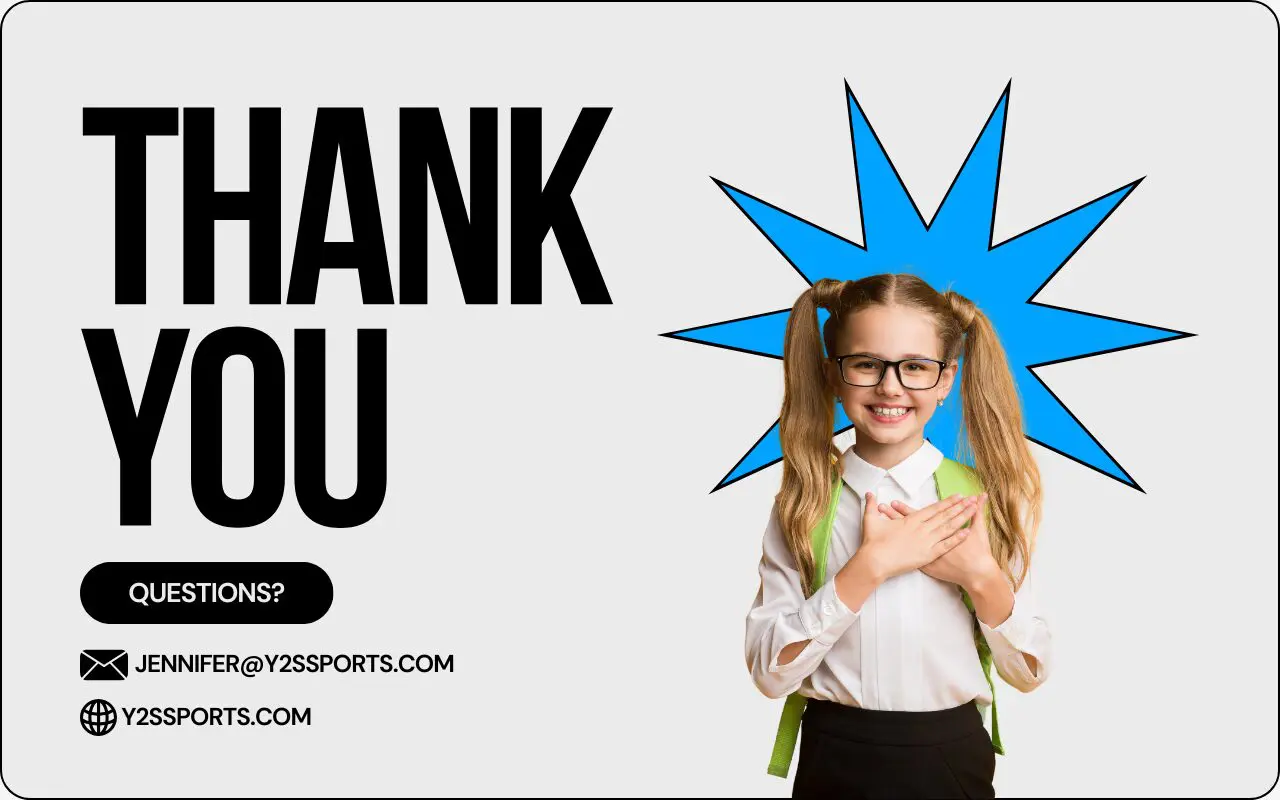
Thank YOu
The youth mental health crisis is one of the most pressing challenges of our time. It is not a temporary problem or a phase—it is a fundamental shift in how today's kids grow up. With increasing pressures in school, sports, and social media, many young people struggle silently, without the tools to navigate life's challenges.
The good news is that we don't have to accept this as the new normal. We can change the trajectory by taking a proactive, preventative approach to youth mental health. By creating programs that build confidence, resilience, and emotional intelligence, we can equip kids with lifelong skills that help them thrive—not just in childhood but as they grow into adulthood.
This white paper invites us to think differently about how we support youth development. It's a call to rethink how we can best support today's youth before they step into adulthood.
We appreciate you taking the time to engage with these ideas. The work ahead is essential, and it will take all of us—parents, coaches, educators, and community leaders—to ensure that the next generation has what they need to succeed. If this white paper sparked something for you, don’t let it stop here.
Sources
Centers for Disease Control and Prevention (CDC) – Youth Risk Behavior Survey Data Summary & Trends Report: 2013–2023, CDC.GOV
PSYCHIATRYONLINE.ORG
CDC – Children’s Mental Health, Data and Statistics, CDC.GOV
National Institute of Mental Health (NIMH) – Statistics on Suicide and Mental Illness
NIMH.NIH.GOV
Pew Research Center – Teen Survey on Depression and Pressure (2018)PEWRESEARCH.ORG
Khalaf et al., 2023 – Systematic Review in Cureus on Social Media Use and Adolescent Mental Health
U.S. Surgeon General’s Advisory on Youth Mental Health (2021) – Commentary in Psychiatric News, PSYCHIATRYONLINE.ORG
Kessler et al., National Comorbidity Survey-Adolescent Supplement – Prevalence of mental disorders by 18
NIMH.NIH.GOV
WHO – Adolescent Mental Health Fact Sheet, 2024 WHO.INT
Sinha et al., 2021 – Study on Adolescent Depression (PMC), PMC.NCBI.NLM.NIH.GOV
Thorisdottir et al., 2022 – Longitudinal study on teen depression and adult outcomes